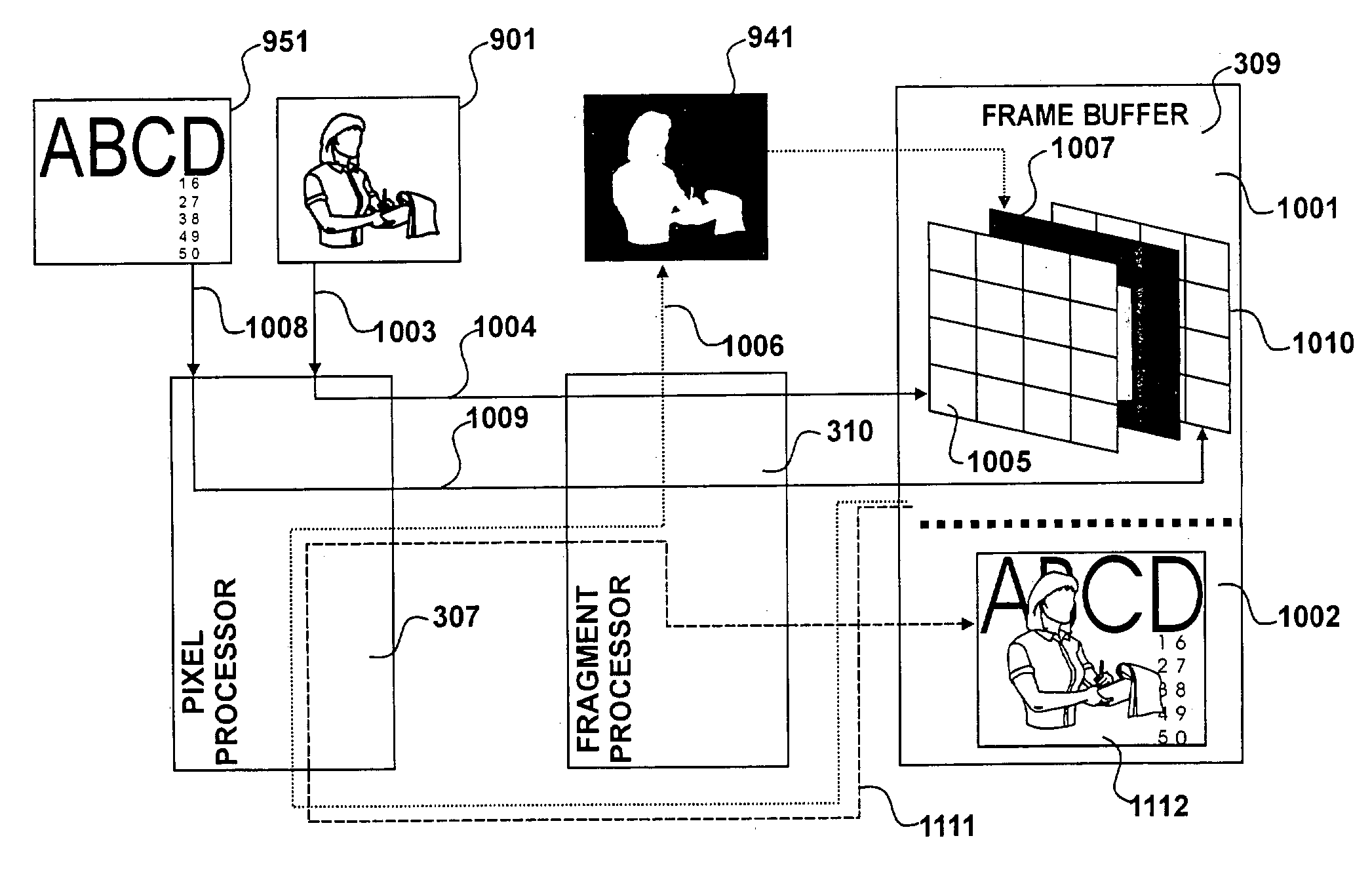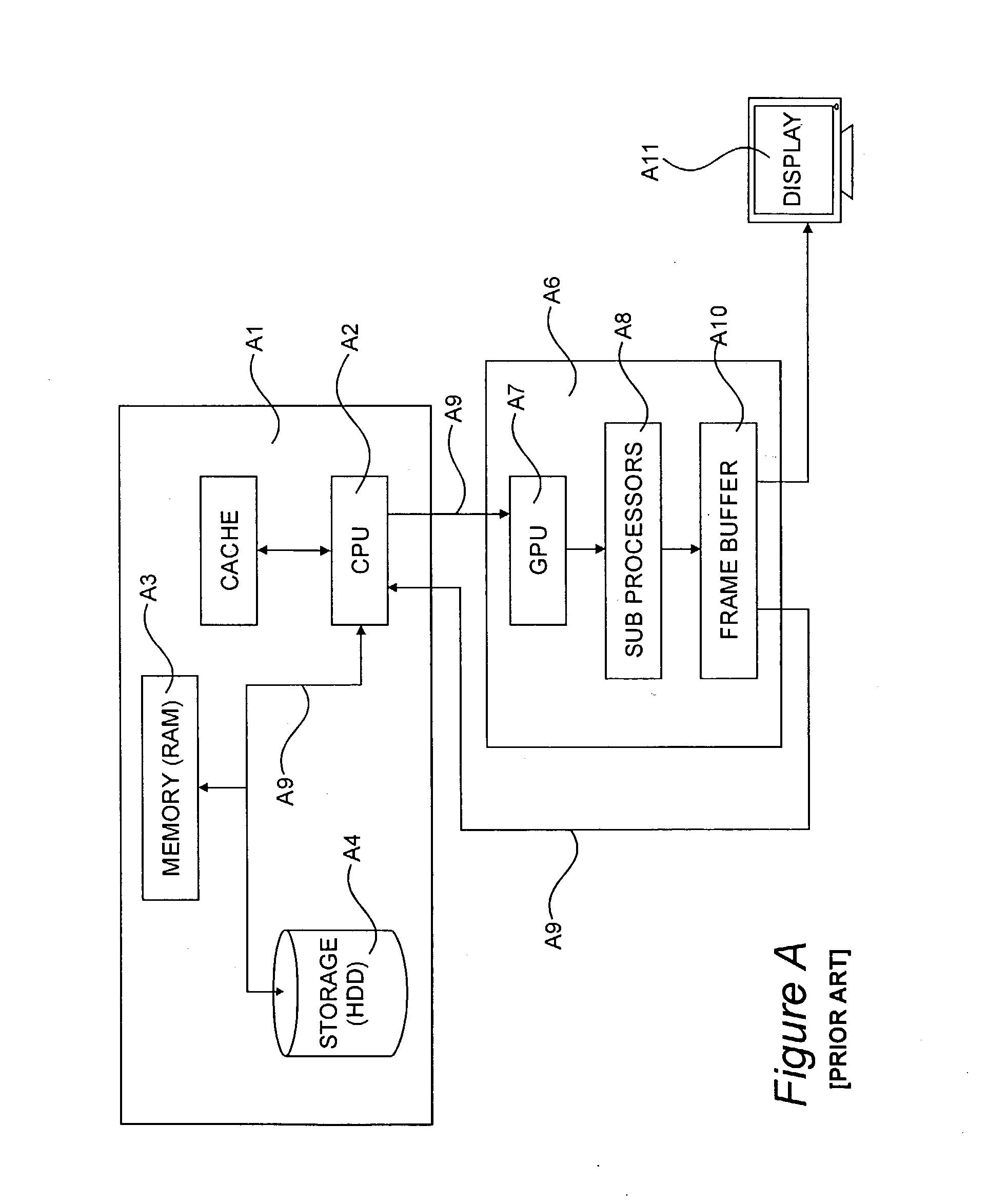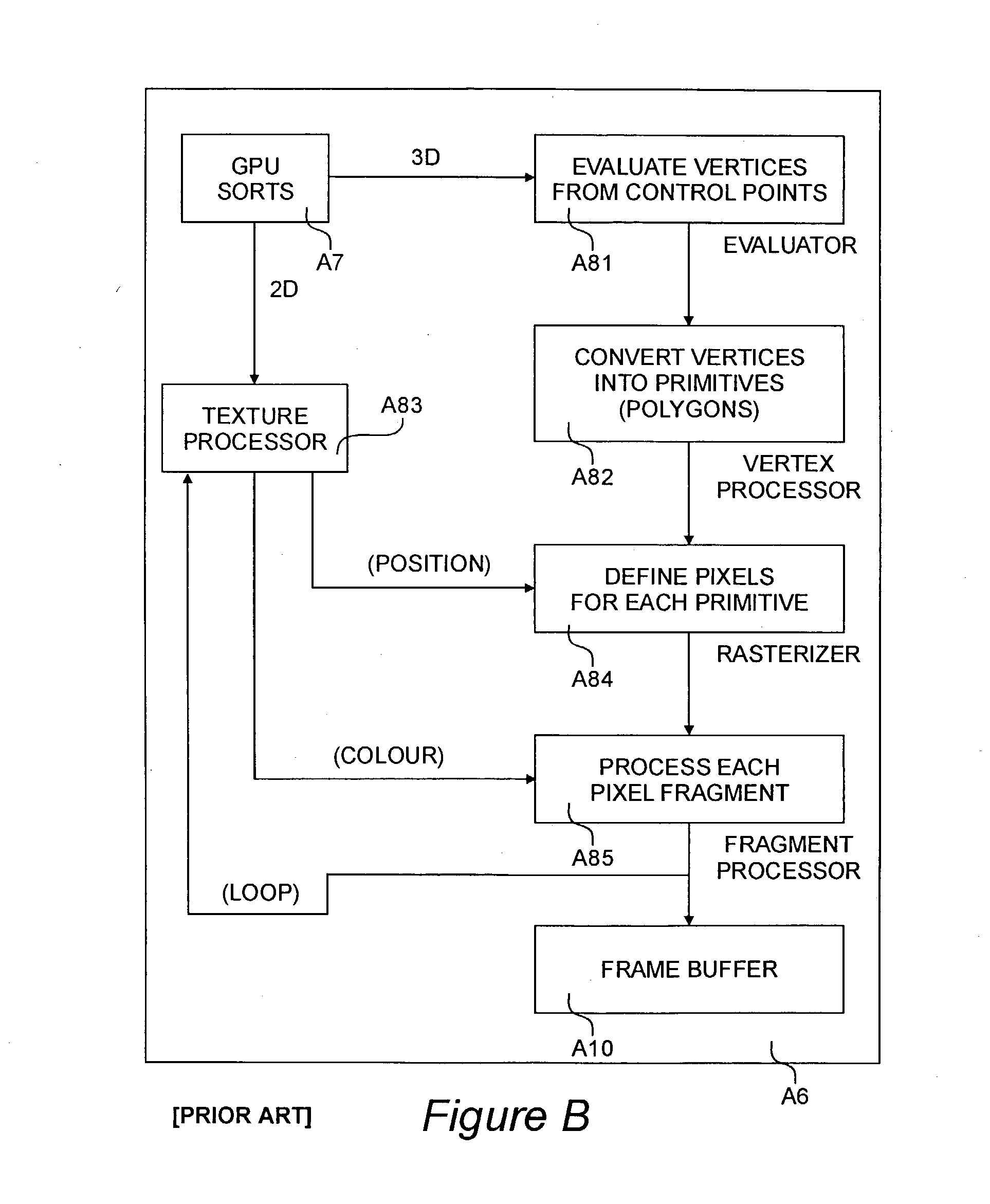Image processing
a technology of image data and processing equipment, applied in the field of image processing systems, can solve the problems of affecting the development of composite image data generation using inexpensive computer systems as described above, requiring similarly expensive, and requiring highly trained operators
- Summary
- Abstract
- Description
- Claims
- Application Information
AI Technical Summary
Benefits of technology
Problems solved by technology
Method used
Image
Examples
Embodiment Construction
[0075] The invention will now be described by way of example only with reference to the previously identified drawings.
[0076] FIG. 1
[0077] An image data processing system is shown in FIG. 1 and includes a programmable computer 101 having a drive 102 for receiving DVD-ROMs 103 and writing to CD-RAMs 104 and a drive 105 for receiving high-capacity magnetic disks, such as ZIP.TM. disks 106. Computer 101 may receive program instructions via an appropriate DVD-ROM 103 and output data may be written to a re-writable CD-RAM 104. Program instructions may be similarly received from a ZIP.TM. disk 106 and output data may be written thereto. Moreover, instructions may be transmitted to and received from a network server 107 or the internet 108, to which said server 107 provides access, by means of network connection 109.
[0078] The user 110 of computer system 101 may visualise the output data of computer 101 on a visual display unit 111. Manual input is received via a keyboard 112, a mouse 113 ...
PUM
 Login to View More
Login to View More Abstract
Description
Claims
Application Information
 Login to View More
Login to View More - R&D
- Intellectual Property
- Life Sciences
- Materials
- Tech Scout
- Unparalleled Data Quality
- Higher Quality Content
- 60% Fewer Hallucinations
Browse by: Latest US Patents, China's latest patents, Technical Efficacy Thesaurus, Application Domain, Technology Topic, Popular Technical Reports.
© 2025 PatSnap. All rights reserved.Legal|Privacy policy|Modern Slavery Act Transparency Statement|Sitemap|About US| Contact US: help@patsnap.com



